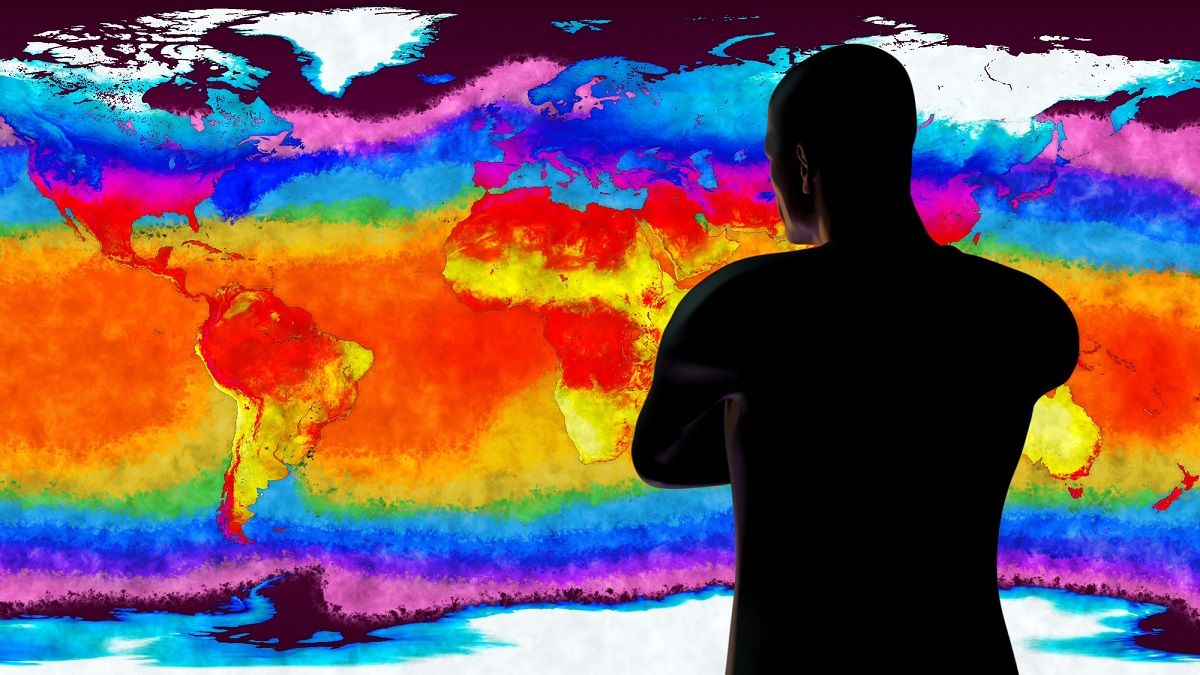Scientists ensure high resolution measurements for carbon diplomacy

MIPT researchers have developed a multichannel laser heterodyne spectroradiometer for greenhouse gases remote sensing. Recently the role of anthropological factors in climate change has transferred from science to economy and foreign affairs. On July 14, the European Commission adopted proposals aimed at achieving the goals agreed in the European Climate Law. No later than 2023, the EU plans to introduce a carbon price on imports of some products — a Carbon Border Adjustment Mechanism. Technologies that allow high resolution measurements of greenhouse gases concentration and distribution are necessary for Russia to determine the carbon balance at the macro-regional level. The article discussing the spectroradiometer was published in Remote Sensing.
According to the UN data, the last decade has been the warmest on record. The EU is actively implementing a low-carbon economy. Member states commit to ensuring net zero emissions by the middle of this century. Russia has also joined the process of switching to new decarbonized forms of production. The EU is proposing a border carbon tax from the year 2023. Russia is the top hydrocarbon exporter in the world, and it possesses the world’s largest nature and climate resources.
Alexander Rodin, executive director of the R&D Center for Environmental Monitoring at MIPT, explained: “We are quite well familiar with how much carbon is emitted by industrial enterprises. The technogenic carbon contamination can be calculated and estimated quite accurately. However, the absorption, or, as experts say, the deposition of carbon by various natural landscapes is a rather poorly studied process, since natural biochemical cycles are more complicated than what humanity owns so far."
Natural landscapes are very diverse, and, depending on location, season and even daytime, they can either absorb or emit carbon. These uncertainties expose a potential vulnerability in Russia’s capabilities to protect its national interests. For example, some international reports state that a forest in Finland is a carbon sink, and exactly the same forest in Karelia is already an emitter. The question is, why? To have an evidence-based explanation, and an unbiased evaluation of the absorbing or, in turn, emitting ability of various natural environments, Russia urgently needs to increase scientific expertise in this area.
Greenhouse gas monitoring requires high accuracy. Only a few types of equipment can comply with it. Researchers of the MIPT Applied Infrared Spectroscopy Lab have created a device with unique characteristics.
Rodin added: “Our multichannel heterodyne spectroradiometer is one of the cases when a small team managed to get ahead of the world level reached so far. The nearest competitors from NASA lag behind us in these developments for a few years. Today the spectral resolution of 108, in other words, one hundred million, in the near-infrared (NIR) spectral range, is unprecedented.”

Photo. Multichannel laser heterodyne spectroradiometer. Credit: Alexander Rodin
Unique characteristics allow to measure concentrations of atmospheric impurities, including greenhouse gases, with high accuracy. So far, the MIPT Center for Environmental Monitoring and Ecology has developed a field version of the device. Now, when Russia creates carbon polygons, there is a need for such equipment. The device is also interesting thanks to easy maintenance and relatively low costs.
Rodin summarized: “We are negotiating this topic, and I really hope that our instruments and technologies will be utilized. Nowadays measuring devices should have a very high resolution. All the devices used now in this field are imported, our manufacturing does not produce anything similar. However, it is still a long way to go from a scientific development to an internationally recognized device. It is very serious work which we are busy with now.”
The space version of the multichannel laser heterodyne spectroradiometer is also under development. Besides monitoring carbon dioxide, the most abundant greenhouse gas, it is essential to precisely measure tropospheric methane and stratospheric water vapor. The device is capable of simultaneously measuring the vertical profiling of CO2, H2O, CH4 and O2, as well as performing direct Doppler measurements of wind speeds in the altitude range from 5 to 50 km.
The MIPT Applied Infrared Spectroscopy Lab has been developing ultra-high-resolution heterodyne spectrometers almost since its creation in 2011. The R&D Center for Environmental Monitoring, which includes three laboratories and one department, develops integrated software and hardware monitoring systems in the interests of the Ministry of Natural Resources and Environment of Russia, other institutions and state corporations, as well as businesses.
___
Header Photo. Credit: Depositphotos